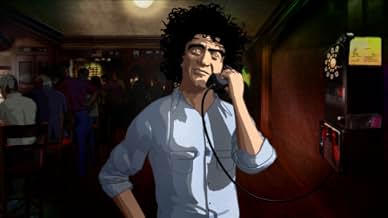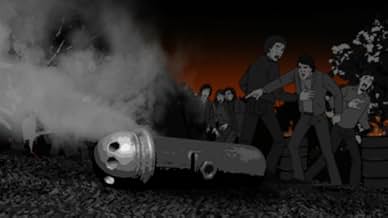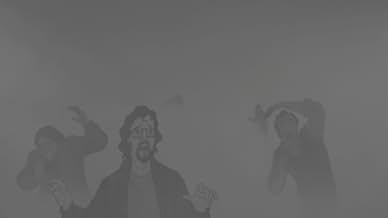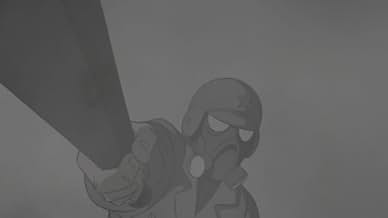IMDb RATING
7.3/10
1.5K
YOUR RATING
Archival footage, animation, and music are used to look back at the eight anti-war protesters who were put on trial following the 1968 Democratic National Convention.Archival footage, animation, and music are used to look back at the eight anti-war protesters who were put on trial following the 1968 Democratic National Convention.Archival footage, animation, and music are used to look back at the eight anti-war protesters who were put on trial following the 1968 Democratic National Convention.
- Awards
- 3 wins & 6 nominations total
Jeffrey Wright
- Bobby Seale
- (voice)
Nick Nolte
- Thomas Foran
- (voice)
Hank Azaria
- Abbie Hoffman
- (voice)
- …
Dylan Baker
- David Dellinger
- (voice)
- …
Mark Ruffalo
- Jerry Rubin
- (voice)
Debra Eisenstadt
- Mary Ellen Dahl
- (voice)
- …
Lloyd Floyd
- Robert Pierson
- (voice)
- …
James Urbaniak
- Rennie Davis
- (voice)
- …
Leonard Weinglass
- Self
- (voice)
David Boat
- Norman Mailer
- (voice)
- …
Julian Rebolledo
- Reporter 2
- (voice)
- (as Julian Dean)
Daniel Hagen
- Bailiff
- (voice)
- (as Dan Hagen)
Roger Jackson
- Marshal 2
- (voice)
- (as Roger L. Jackson)
- …
Ted Marcoux
- Robert Murray
- (voice)
- Director
- Writer
- All cast & crew
- Production, box office & more at IMDbPro
Featured reviews
I am not usually a fan of added-in animation. There are a few movies, Pink Floyd's extraordinary antiWar film 'The Wall' one of them, in which the animation provides graphic imagery to enhance the surreal feeling for the viewer. But in that movie the imagery is mostly a nod to Jungian archetypes morphing as it does from animal form to out-of-control mechanical killing machines. There are times when it works beautifully to complement the protagonist's suicidal angst, and times when it doesn't work as well, but it meshes well with the score to heighten the mood of the music.
In 'Chicago 10' the animation provides the courtroom re-enactment to fill in the gap of not having actual courtroom video. The actual human beings are rendered in cartoon form.
Does it succeed?-- for me it isn't as powerful as having live actors either impersonate or interpolate the roles of the courtroom persona. I think for me it would have worked better to have re-done those scenes with actors. But . . .
But I want to say how powerful the movie is. . . I knew the outcome, I am of that time----but the tension continued to accumulate as the trial and the actual scenes wove a story of an overview of America in the heartland in 1968.
This should be required viewing for anyone born after 1965 and maybe earlier. It has always been difficult for me to describe to my children how polarized the nation was during this period... I've never felt I could generate for them that vicarious tension necessary for understanding. This movie accomplishes that. The animation isn't to my taste--but it works nonetheless. Would it have been more powerful if real actors were used for the court scenes?? Maybe. And maybe it is that cartoonish abstraction from reality that the filmmakers were trying to achieve, at an event which perfectly embodied the insanity of those who were siding with militarism while it was killing their own. There is enough actual video used to allow a lot of the film to show us the people involved as they were then, and what happened to them, with the animation overlaying.
I think that more footage of the Vietnam war, the obscene news footage that Americans were exposed to nightly, might have been useful too, in recreating the ambiance of that time. Quite the contrast to the sanitized photojournalism of the current war in Iraq which stays conveniently and purposefully out of view, out of mind for American citizens since 2003, the Vietnam drama took place live in primetime, and the shockingly visceral quality of that televised carnage finally overcame the credibility of government rhetoric about stopping the Red menace.
Thank you for this look, and feeling, back in time. Well done.
In 'Chicago 10' the animation provides the courtroom re-enactment to fill in the gap of not having actual courtroom video. The actual human beings are rendered in cartoon form.
Does it succeed?-- for me it isn't as powerful as having live actors either impersonate or interpolate the roles of the courtroom persona. I think for me it would have worked better to have re-done those scenes with actors. But . . .
But I want to say how powerful the movie is. . . I knew the outcome, I am of that time----but the tension continued to accumulate as the trial and the actual scenes wove a story of an overview of America in the heartland in 1968.
This should be required viewing for anyone born after 1965 and maybe earlier. It has always been difficult for me to describe to my children how polarized the nation was during this period... I've never felt I could generate for them that vicarious tension necessary for understanding. This movie accomplishes that. The animation isn't to my taste--but it works nonetheless. Would it have been more powerful if real actors were used for the court scenes?? Maybe. And maybe it is that cartoonish abstraction from reality that the filmmakers were trying to achieve, at an event which perfectly embodied the insanity of those who were siding with militarism while it was killing their own. There is enough actual video used to allow a lot of the film to show us the people involved as they were then, and what happened to them, with the animation overlaying.
I think that more footage of the Vietnam war, the obscene news footage that Americans were exposed to nightly, might have been useful too, in recreating the ambiance of that time. Quite the contrast to the sanitized photojournalism of the current war in Iraq which stays conveniently and purposefully out of view, out of mind for American citizens since 2003, the Vietnam drama took place live in primetime, and the shockingly visceral quality of that televised carnage finally overcame the credibility of government rhetoric about stopping the Red menace.
Thank you for this look, and feeling, back in time. Well done.
The Kid Stays in the Picture was a great documentary with a refreshing style that managed to keep me hooked into a subject that I honestly wasn't very interested in. So I was extremely excited to see Brett Morgen creating this documentary about history that I was very interesting in and.. Well, Morgen probably reached a little too far on this one.
This documentary is a mix of the very powerful archive footage of the demonstrations and events leading up to them, and a rather insipid animated recreation of the trial. There are no retrospective interviews (many of the 8 are now deceased) and there is no narration - both omissions that suit the style of the director and help emphasize the time and place of the events.
The archive footage could possibly have carried the film by itself. But this documentary is also about the trial. Without any footage or audio of the trial, how do you recreate it so that it appears as the farce that it was - while doing justice to the amazing news footage of protesters being maced and beaten? To do so would honestly have been an amazing accomplishment. Animating the trial was a bold move, but the end result is visually inadequate and mixes poorly with the news footage.
I have no problem with the use of animation, but the animation itself is of very low quality and isn't rather creative. For the trial scenes, I believe the intention was to create a comic look and feel to highlight the nature of the trial itself - but the uninspired designs are too smoothly rendered with wooden mo-cap movement that appears borderline uncanny valley. Other demonstration scenes were animated in a hand drawn/cut out style at an extremely jerky 3-4 frames per second that is difficult to watch to say the least - thankfully they are short. The one redeeming quality of the animation is the voice acting which is top notch across the board, even if Hank Azaria's Abbie Hoffman sounds a lot like Moe from The Simpsons.
My other complaint is the soundtrack, which is about half a mix of 90's rap and another half a mixed bag of pop and metal. The music has no connection to time or events and seems to only take away from the authenticity of the events. I've read the interviews where Morgen describes this movie as being about now, and not 1968 - but I think that is a disservice to the Chicago 8. Sure, there is a war going on right now as was then - but in 2008 young people are more likely to protest high gas prices than the current war.
This documentary is a mix of the very powerful archive footage of the demonstrations and events leading up to them, and a rather insipid animated recreation of the trial. There are no retrospective interviews (many of the 8 are now deceased) and there is no narration - both omissions that suit the style of the director and help emphasize the time and place of the events.
The archive footage could possibly have carried the film by itself. But this documentary is also about the trial. Without any footage or audio of the trial, how do you recreate it so that it appears as the farce that it was - while doing justice to the amazing news footage of protesters being maced and beaten? To do so would honestly have been an amazing accomplishment. Animating the trial was a bold move, but the end result is visually inadequate and mixes poorly with the news footage.
I have no problem with the use of animation, but the animation itself is of very low quality and isn't rather creative. For the trial scenes, I believe the intention was to create a comic look and feel to highlight the nature of the trial itself - but the uninspired designs are too smoothly rendered with wooden mo-cap movement that appears borderline uncanny valley. Other demonstration scenes were animated in a hand drawn/cut out style at an extremely jerky 3-4 frames per second that is difficult to watch to say the least - thankfully they are short. The one redeeming quality of the animation is the voice acting which is top notch across the board, even if Hank Azaria's Abbie Hoffman sounds a lot like Moe from The Simpsons.
My other complaint is the soundtrack, which is about half a mix of 90's rap and another half a mixed bag of pop and metal. The music has no connection to time or events and seems to only take away from the authenticity of the events. I've read the interviews where Morgen describes this movie as being about now, and not 1968 - but I think that is a disservice to the Chicago 8. Sure, there is a war going on right now as was then - but in 2008 young people are more likely to protest high gas prices than the current war.
The story telling in Chicago 10 is inviting. Once inside it transforms the audience into witnesses. With your own senses you see what many have for decades refused to see. It is a work well done. 1968 was a year that changed the US of A as much as May '68 changed France. The movie is not an history lesson. This movie brings us into that time in a way that allows us to reflect not only upon what happened in Chicago, but moreover what was yet to come in the USA. The trial of the Chicago 7 almost did not happen. Ramsey Clark the US Attorney General until January 20, 1969 was not going to allow this case to be prosecuted. After January 20th, Nixon's Attorney General John Mitchell made sure that the silent majority got their show trial. It backfired. The rest is in the movie.
The time: August 1968. The place: the Chicago Amphitheater, host to that year's Democratic National Convention. The event: the riots that broke out when an assortment of "hippies, yippees and just plain kids" took to the streets to protest the US' continuing involvement in the Vietnam War. The march and sit-in, originally billed as a "Festival of Life," turned violent when the ramped-up police and National Guard forces, estimated at well over 25,000 strong, began tear-gassing and billy-clubbing the demonstrators on the last night of the convention – in full view of the nation's citizens who watched in shock and amazement as it unfolded on their TV sets at home.
The demonstrations were largely organized by The National Mobilization Committee to End the War in Vietnam, from whose leadership ranks would come many of the men destined to go down in the annals of anti-establishment folklore as the Chicago 7 (the 10 of the title comes from the inclusion of Black Panther co-founder Bobby Seale, who had his trial severed, and the two lawyers). After the incident, these men were placed on trial, charged with conspiracy and with violating the Anti-Riot Act of 1968. All seven - David Dellinger, Tom Hayden, Abbie Hoffman, William Kunstler, Jerry Rubin, Rennie Davis and John Froines – were to wind up spending at least some time behind bars for their "crimes." Written and directed by Brett Morgan, the documentary "Chicago 10" blends amazing archival footage with animated re-enactments of the trial – based on actual court transcripts – with A-list actors like Hank Azaria, Nick Nolte, Mark Ruffalo, Roy Scheider and Liev Schreiber providing the voices.
The movie provides a fascinating glimpse into not only those turbulent times but the minds of the men who helped to bring them about. For instance, it's amusing to note how the defendants treated the trial itself almost as if it were some form of subversive street-theater, in the hopes of antagonizing the conservative judge, Julius Hoffman (they really DO seem to have gotten under his skin), and destroying the court's authority in the process. Also, in the months when the trial was going on, the defendants would fan out across the country on their off-hours, lecturing on colleges campuses – with most of the speaking fees going to defray the cost of the trial - raising awareness among the students and becoming counter-culture celebrities and spokesmen for a whole new generation of politically activated youngsters. Then the men would return to Chicago to resume their roles in the trial.
The final twenty minutes or so of the movie - as we watch the government forces move in to disperse the protesters and the subsequent chaos that ensued - are riveting and eye-opening to say the least. But the whole movie is engaging and informative and reminds us of just how fragile a thing the right to free speech and assembly can be even in a country that prides itself on that being the very foundation upon which its democracy is built.
The demonstrations were largely organized by The National Mobilization Committee to End the War in Vietnam, from whose leadership ranks would come many of the men destined to go down in the annals of anti-establishment folklore as the Chicago 7 (the 10 of the title comes from the inclusion of Black Panther co-founder Bobby Seale, who had his trial severed, and the two lawyers). After the incident, these men were placed on trial, charged with conspiracy and with violating the Anti-Riot Act of 1968. All seven - David Dellinger, Tom Hayden, Abbie Hoffman, William Kunstler, Jerry Rubin, Rennie Davis and John Froines – were to wind up spending at least some time behind bars for their "crimes." Written and directed by Brett Morgan, the documentary "Chicago 10" blends amazing archival footage with animated re-enactments of the trial – based on actual court transcripts – with A-list actors like Hank Azaria, Nick Nolte, Mark Ruffalo, Roy Scheider and Liev Schreiber providing the voices.
The movie provides a fascinating glimpse into not only those turbulent times but the minds of the men who helped to bring them about. For instance, it's amusing to note how the defendants treated the trial itself almost as if it were some form of subversive street-theater, in the hopes of antagonizing the conservative judge, Julius Hoffman (they really DO seem to have gotten under his skin), and destroying the court's authority in the process. Also, in the months when the trial was going on, the defendants would fan out across the country on their off-hours, lecturing on colleges campuses – with most of the speaking fees going to defray the cost of the trial - raising awareness among the students and becoming counter-culture celebrities and spokesmen for a whole new generation of politically activated youngsters. Then the men would return to Chicago to resume their roles in the trial.
The final twenty minutes or so of the movie - as we watch the government forces move in to disperse the protesters and the subsequent chaos that ensued - are riveting and eye-opening to say the least. But the whole movie is engaging and informative and reminds us of just how fragile a thing the right to free speech and assembly can be even in a country that prides itself on that being the very foundation upon which its democracy is built.
I just attended a screening of Chicago 10 at Sundance. Wow. What a unique and important movie. The mix of archival footage and animation blend together much better than I anticipated. The animated scenes are primarily courtroom scenes. The dialog during the animated courtroom scenes are taken directly from the court transcripts. The soundtrack is perfect. There is a combination of old and new including songs from contemporary artists such as Rage Against The Machine & Eminem. Although archival footage was used, and court transcripts were used as dialog, I'm not too sure that I'd call this film a documentary. This film was moving, powerful, and well worth seeing. I thought that the film was such a gem that I'm trying to get a tickets to see it again during the festival.
Did you know
- TriviaNick Nolte and Liev Schreiber both played the roles Gregory Peck played in the remakes of Cape Fear (1962/1991) and The Omen (1976/2006).
- How long is Chicago 10?Powered by Alexa
Details
- Release date
- Country of origin
- Official site
- Language
- Also known as
- Chicago 10: Speak Your Peace
- Filming locations
- Production companies
- See more company credits at IMDbPro
Box office
- Gross US & Canada
- $177,490
- Opening weekend US & Canada
- $42,724
- Mar 2, 2008
- Gross worldwide
- $177,490
- Runtime1 hour 50 minutes
- Color
- Sound mix
- Aspect ratio
- 1.85 : 1
Contribute to this page
Suggest an edit or add missing content


























